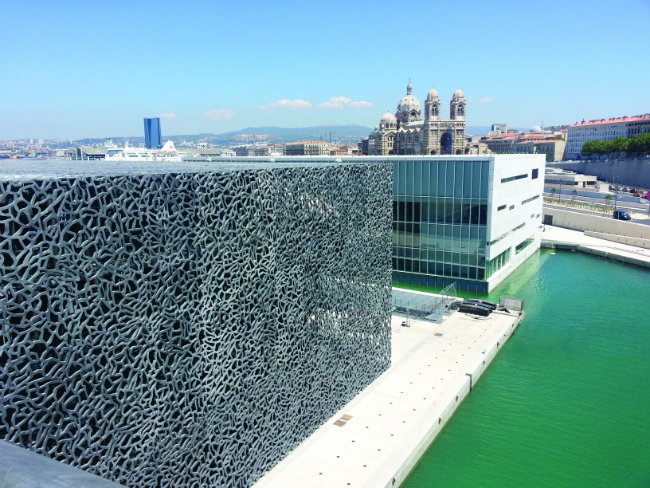The Renaissance of Marseille
Since 2013, when Marseille was designated a European Capital of Culture, France’s oldest city has embarked on a revival that continues to gain in momentum. Still undertouristed, now is a great time to visit before the world catches on.
Before 2013 turned the spotlight on Marseille, it was both France’s most maligned big city and one of its best-kept secrets. A seedy reputation and a run-down city centre caused some travellers to give the capital of Provence a wide berth. But those in the know relished Marseille as much for its culture and history as its rough-and-tumble authenticity, thriving food scene, 300-plus days of sun and glorious Mediterranean setting. Loving Marseille despite its warts – or maybe because of them – was an insider thing.
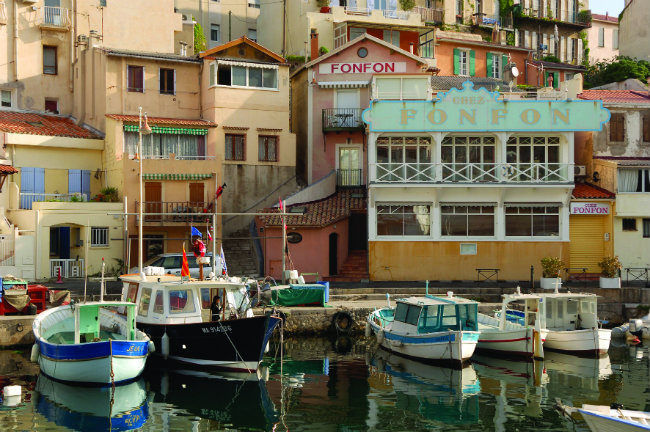
The fishing port of Vallon des Auffres. Photo: OTCM
But no longer: Marseille is on a roll and travellers are catching on fast. Tourist numbers jumped by half a million visitors after 2012 and continue to increase yearly. The 660-million-euro purse that accompanied the Capital of Culture designation gave the city the means to invest in a major spruce-up, and the world discovered that this once ragged beauty cleans up very well indeed.
First time visitors to Marseille can fall hard. Your first glimpse of the area feels almost revelatory: the dazzling light of the old port, its ships’ masts reflected in a deep-turquoise bay framed on one side by Notre-Dame de la Garde basilica, on the other by a cubist array of newer buildings (the area was levelled by Nazi bombs) topped by the magnificent Hôtel Dieu – a majestic 17th-century hospital that’s now the Intercontinental Hotel – and the famous rosy pink stone of the old fort and fortifications.
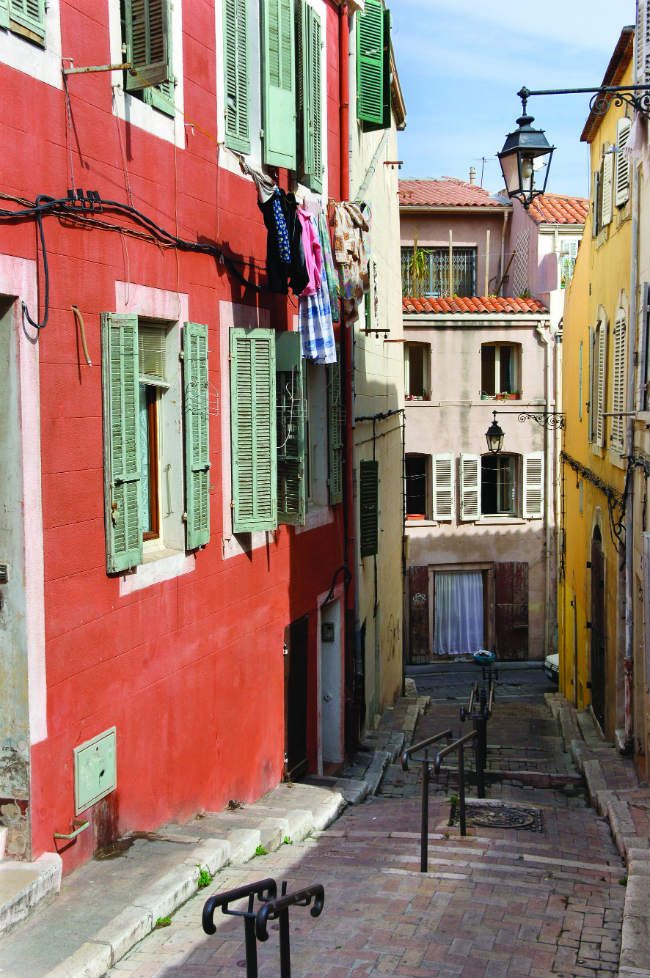
Le Panier neighborhood of Marseille. Photo: OTCM
A City for the Ages
The beating heart of the city, it’s no surprise that the old port was the epicentre of the rehabilitation project; its weathered docks and wharves were rebuilt, the surrounding walkways drastically widened and vehicle access restricted to encourage pedestrian traffic and allow for street performers, seasonal markets and public artworks. At the port’s plaza a giant Ferris wheel, installed in 2015, has open cabins that revolve, offering tremendous views of sea and city, while architect Norman Foster’s mirrored Ombrière – part sculpture, part shelter – reflects the shimmering water and people beneath.
A meander up the port’s picturesque north side takes you to the 12th-century Fort Saint-Jean – rebuilt in the 17th century by Vauban, Louis XIV’s military architect – with its guns pointing toward the city to keep the rebellious Marseillaise in line – and the dazzling J4 pier. Both form a major part of Marseille’s once-neglected waterfront and the other key focus of the restoration works.
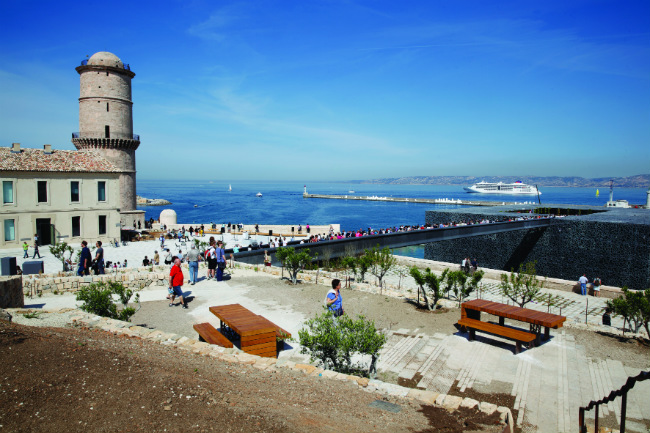
A walkway links the MuCEM to the newly remodeled fort of St Jean ©Lamy
A flight of steps at the fort’s entrance leads to two suspended footbridges, the first to Le Panier. This rabbit warren of winding cobbled streets, tiny squares and pastel-coloured houses is the spot where the Greeks landed 2,600 years ago, making it France’s – and one of Europe’s – oldest neighbourhoods. A colourful melting pot of artists, ateliers, vintage boutiques and tiny, chic cafés, give visitors a feel for Marseille’s splendid diversity, though it’s rapidly becoming one of the city’s most gentrified areas. Le Panier’s oldest landmark is the superb 17th-century Vieille Charité. Once a hospice for the poor and homeless, it now houses the excellent Museum of Mediterranean Archaeology and the Museum of African, Oceanic and American Indian Art.
The old fort’s second walkway leads to two new stars of the city’s renewal programme: the Villa Méditerranée, by Stefano Boeri, a stark white building cantilevered over a turquoise reflecting pool; and Rudy Ricciotti’s gleaming Museum of European and Mediterranean Civilisations (MuCEM), enveloped in a grey latticework screen intended to evoke the bay’s shimmering water.
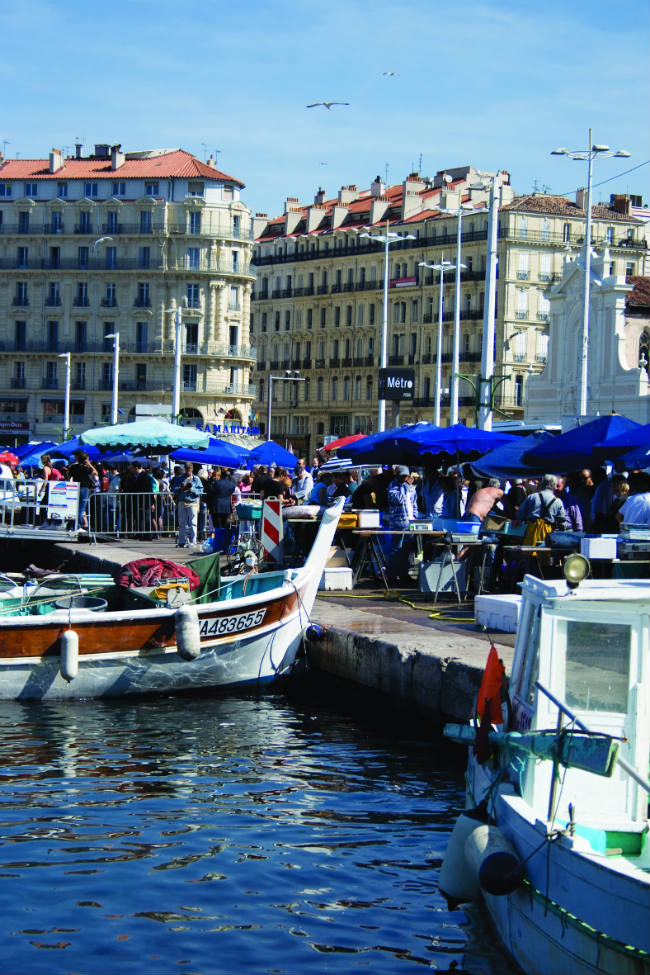
The fish market in the Old Port. Photo: Marseille Office of Tourism
Along with a roster of contemporary art exhibitions focusing on Mediterranean culture and an extensive bookstore, MuCEM affords spectacular views of the harbour from its café and restaurant, both headed by Gérald Passédat, a three-Michelin-starred native son. In warmer weather – usually from March to October in Marseille – MuCEM’s spacious light-bathed plaza, with sweeping views of the harbour and the imposing neo-Byzantine Sainte-Marie-Majeure cathedral, hosts outdoor exhibitions and performances.
Just across the Quai de la Tourette, the Regards de Provence Museum, set in the old station sanitaire where arriving immigrants were diagnosed and deloused before gaining entrance to the city, features a programme of exhibitions focusing on Provençal artists past and present. The sleek, angular building dating from 1948 was saved from destruction by local activists. Visitors can still see the sanitation works and take in a short film about immigration to Marseille that’s well worth the time. Open all day, the museum’s handsome café-restaurant and outdoor terrace is a great spot for a sit-down lunch, quick gourmet sandwich or a glass of wine while taking in some breathtaking views of the harbour.
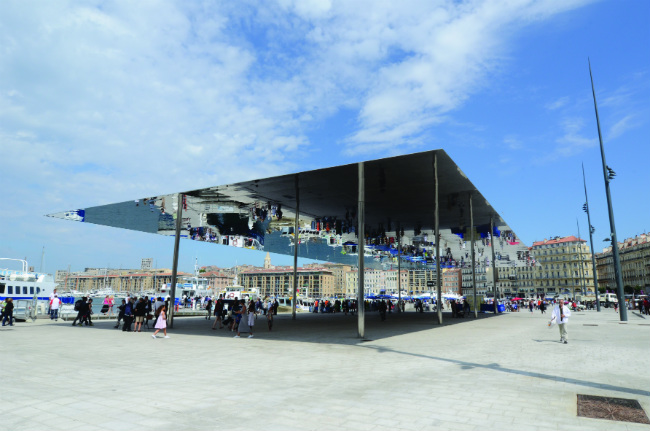
Ombrière, part sculpture, part shelter, designed by Norman Foster. Photo: Vdm
Completed in 2013, Regards de Provence was part of the first wave of renovations focused on the quay that included Marseille’s first skyscraper, a soaring split tower by Zaha Hadid, and the Silo, a new contemporary performance space in an old grain silo. The quay has been one of the city’s ongoing preoccupations, with no fewer than three major shopping and dining centres opening in 2015. Built at the end of the 19th century as storage areas linking the harbour and the cathedral, Les Voûtes’ (vaults) graceful arches now house upscale shops, cafés and Les Halles de la Major, a gourmet food court, spearheaded by chef Passédat, where you can find gourmet Mediterranean delights at any time of the day, coffee, drinks… you name it. The outdoor terrace is a popular place to sit in the sun and take in the view.
Next door, Les Docks’ complex of six huge shipping warehouses, each stylishly restored by a big-name architect, serves as an interconnected hub for new business, coffee shops and cafés (both indoor and outdoor) and interesting one-off boutiques instead of the usual French retail chains. Those you’ll find next door at the more mall-like Terrasses du Port, which, among the more upscale French fashion chains, also has a large offshoot of the French department store Printemps. The most interesting part of the complex is its top-floor balcony, where you can watch the ferries to Corsica and other far-flung Mediterranean destinations or dine at R2 Marseille: a restaurant by day and a cocktail bar and lively dance club by night.
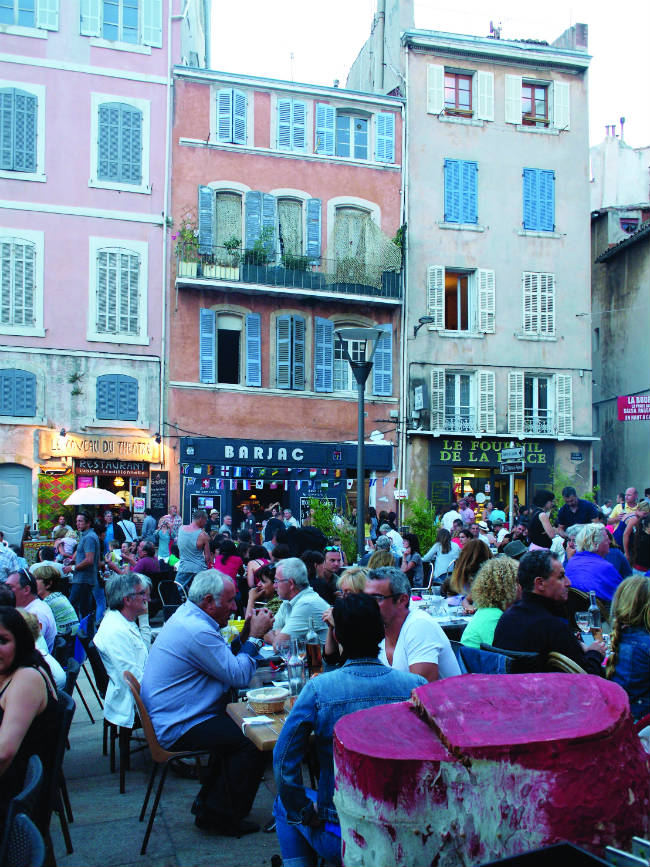
Le Panier neighborhood of Marseille. ©Lamy-201
Chic Street
South of the old port, the once-gritty Quai de Rive Neuve is the city’s newest fashionable district, with the beautiful C2 Hôtel, organic restaurants and bakeries, cafés, food halls and chic concept stores popping up every week. A walk along the Rue Sainte leads past some of the more interesting boutiques to the new Marché Saint-Victor, a multi-stall food market that’s the place for a bite and a drink, especially at happy hour. Across the street sits the Four des Navettes, Marseille’s oldest wood-oven bakery, and the medieval Abbaye Saint-Victor. A 15-minute walk leads you to the Pharo gardens, a beautiful place to stroll, picnic and take in the panoramic views, and the Sofitel, whose newly opened top-floor terrace affords some of the most sweeping views of the old port and is the place to be for sipping a cocktail while watching the sunset.
Art and architecture buffs can hop on a bus from the Vieux Port to three of the city’s great cultural attractions: Le Corbusier’s iconic Cité Radieuse – a 1950s apartment complex built as a self-contained village within a city – houses a hotel, shops, an acclaimed gourmet restaurant and a spectacular rooftop sculpture garden designed and curated by Ito Morabito, a Marseille native who goes by the name Ora-ïto. The new Musée Borély, which houses the collections of the old fashion, design and Faïence museums, and the Musée d’Art Contemporain (MAC) are both within walking distance of Cité Radieuse. And if you can plan in advance, be sure to book reservations at the extraordinary AM par Alexandre Mazzia, Marseille’s top gastronomic restaurant.
From France Today magazine
[Related article: Where to Eat, Sleep, and Shop in Marseille]
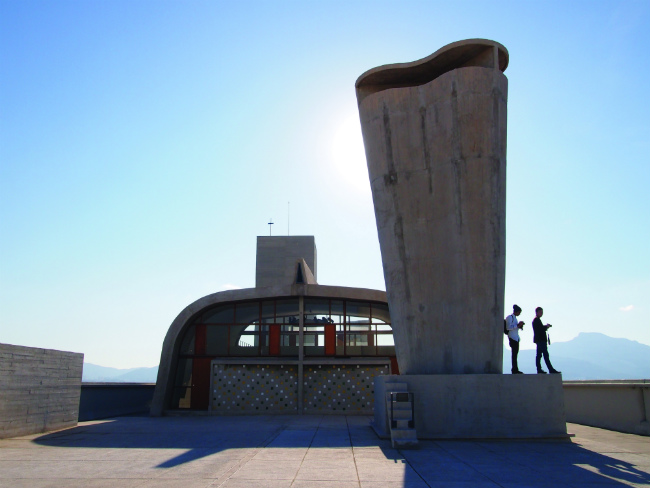
The rooftop of Le Corbusier’s Cité Radieuse has been turned into an art space by designer Oro-Ito. Photo: OTCM_FLC
Share to: Facebook Twitter LinkedIn Email
Leave a reply
Your email address will not be published. Required fields are marked *

